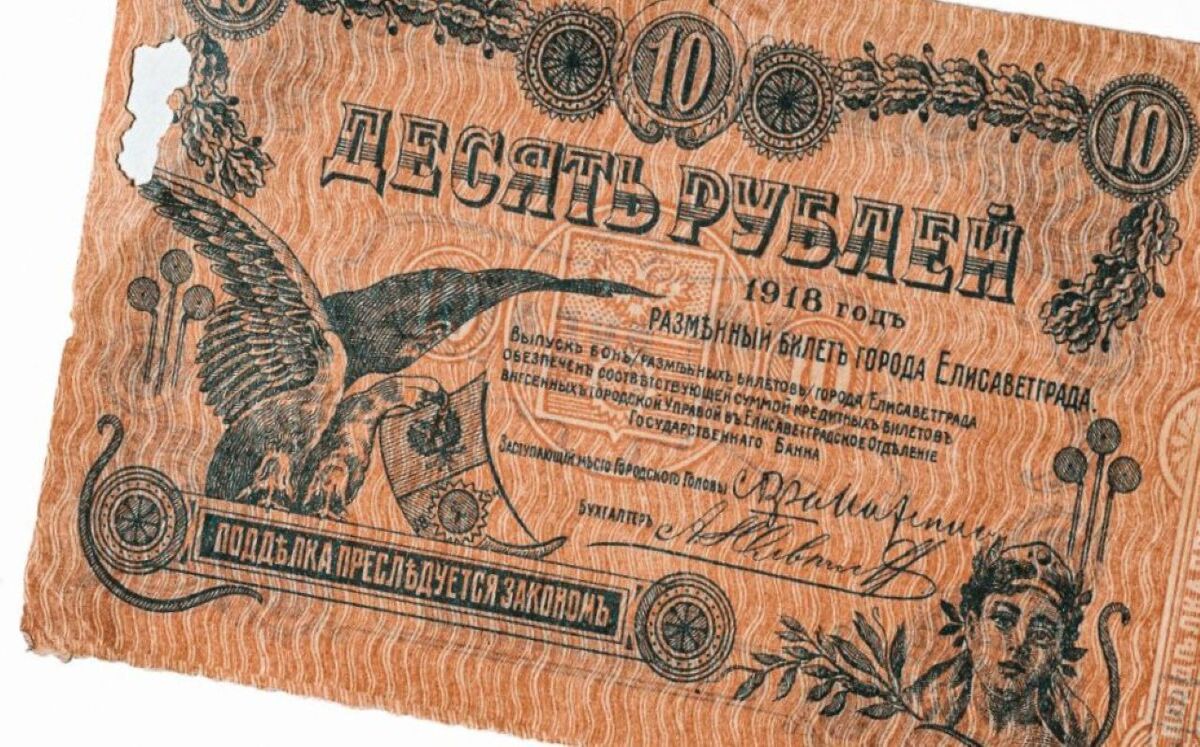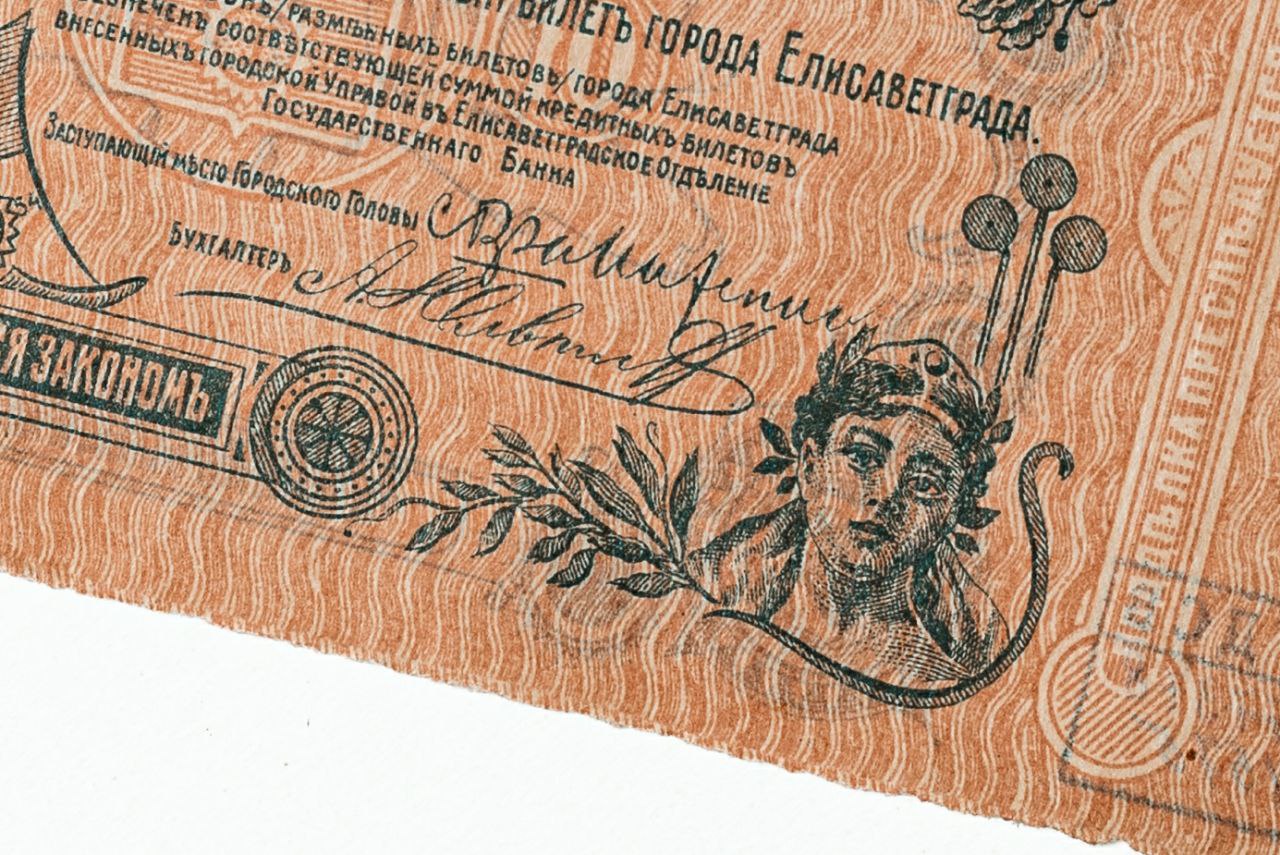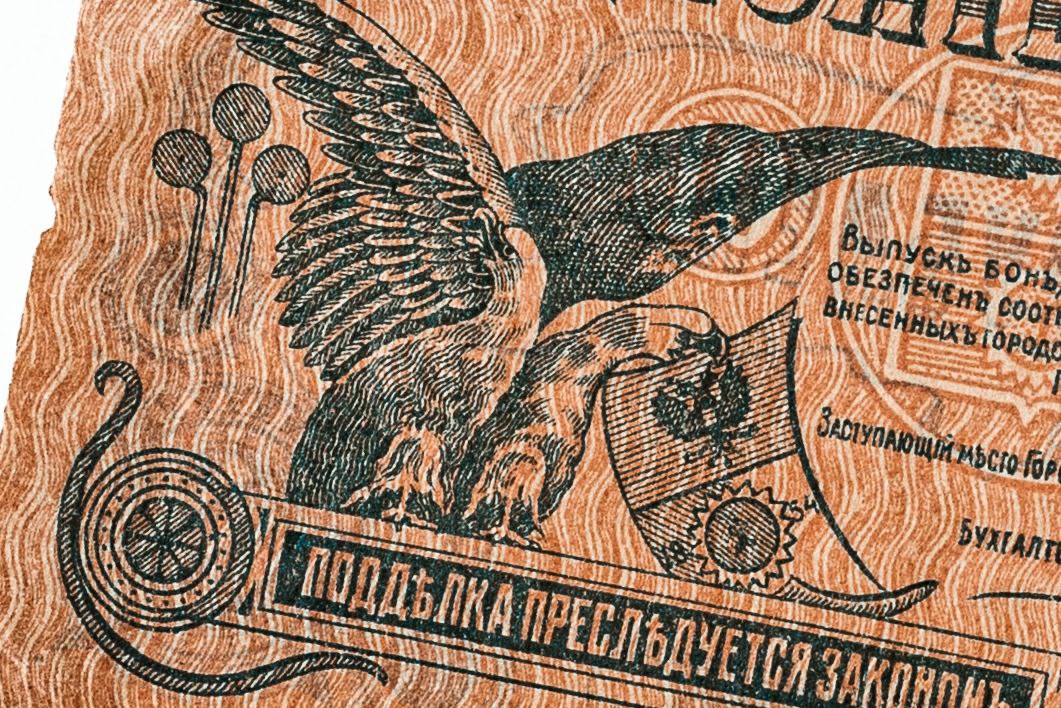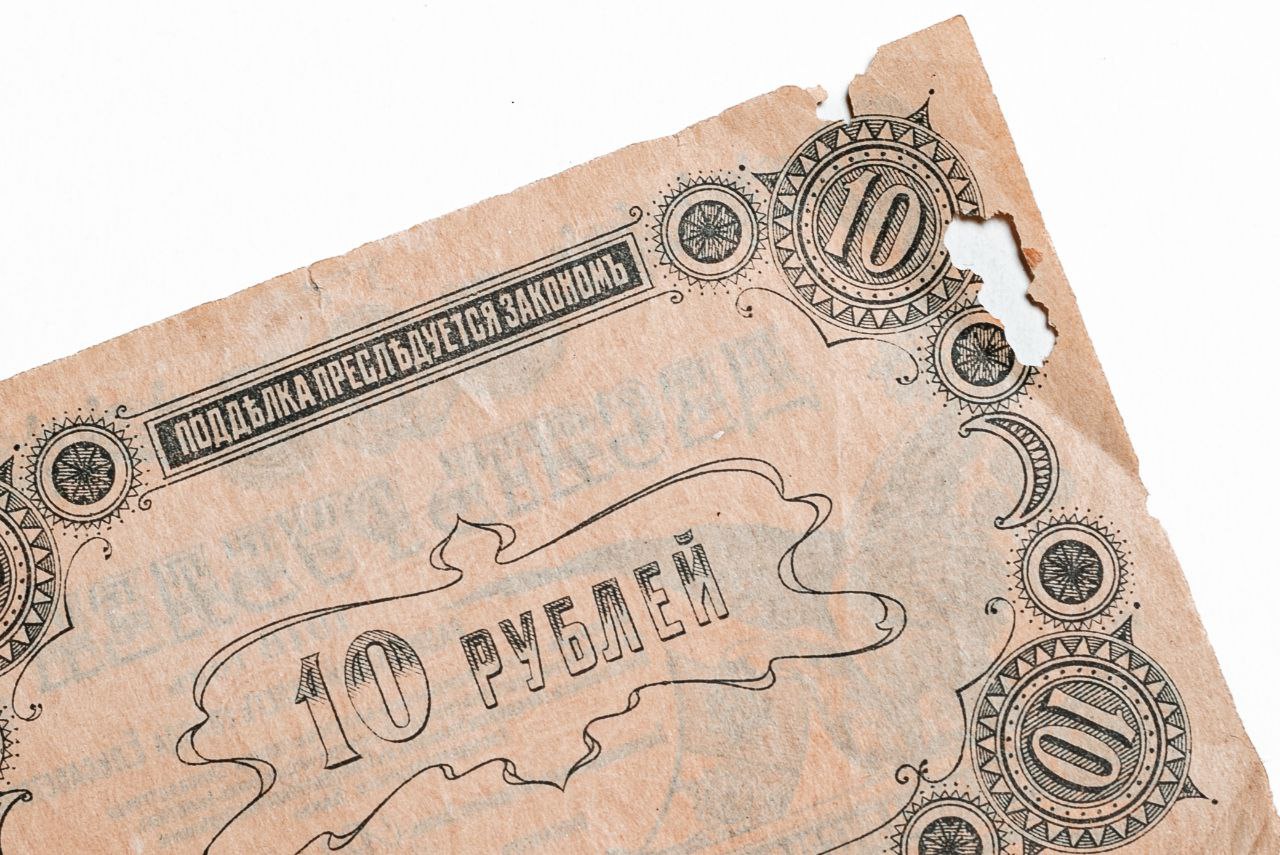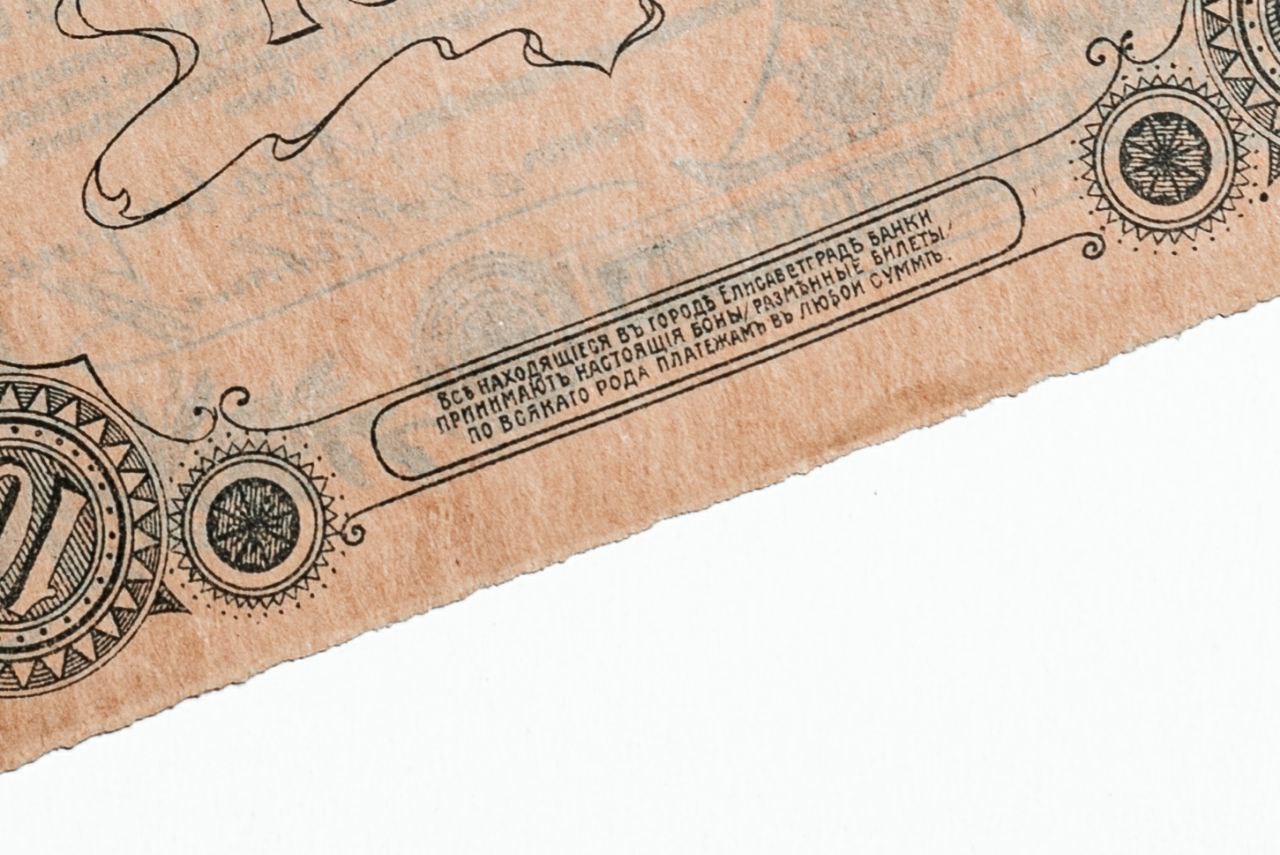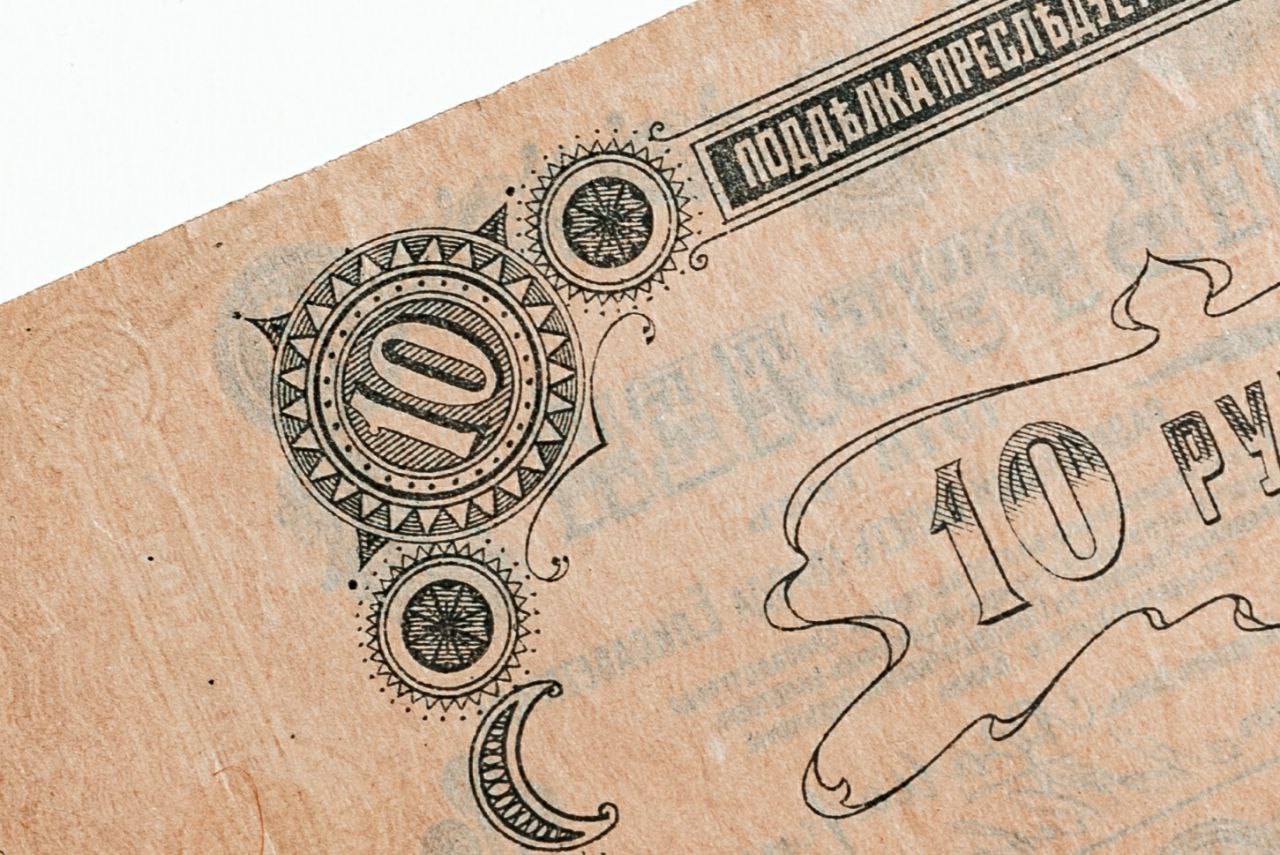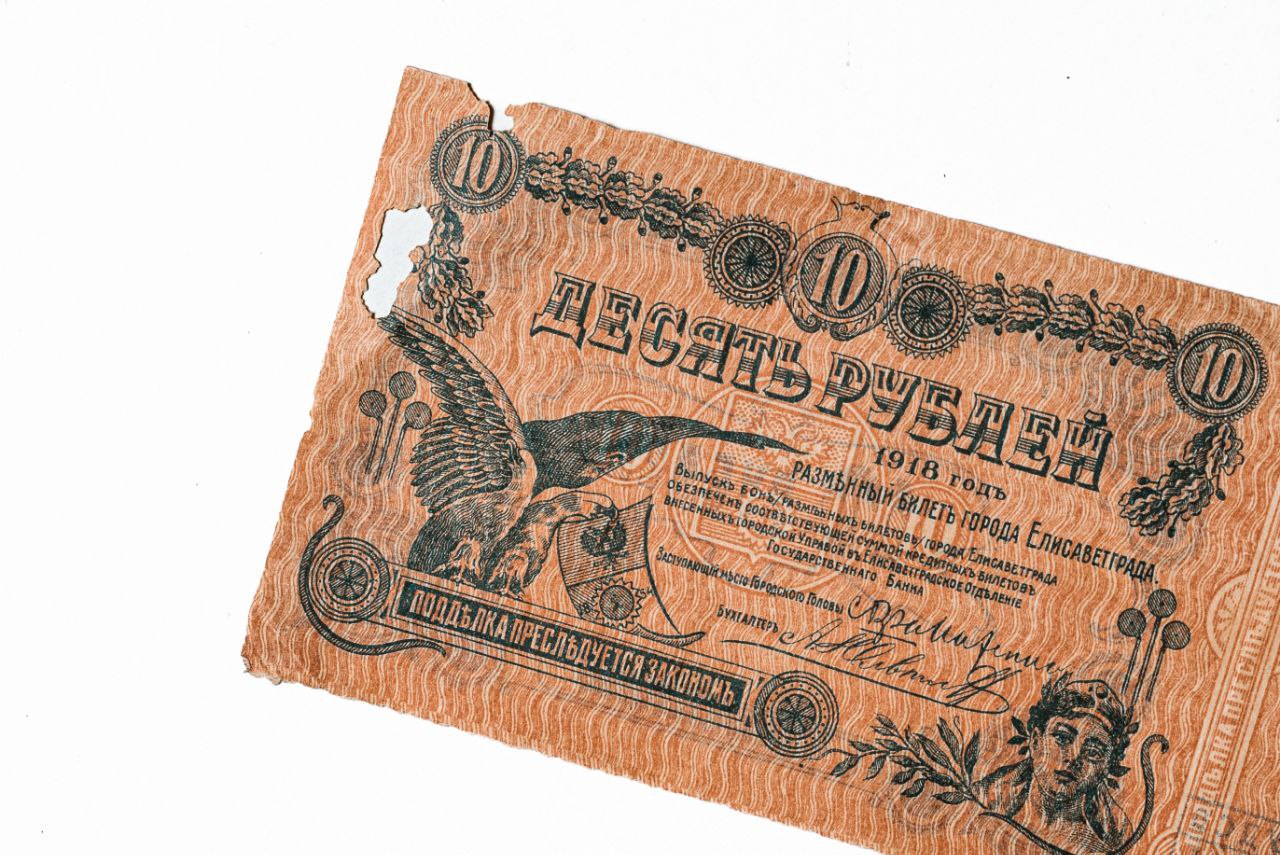In January 1918, when Yelyzavethrad had no connections either with Kyiv or Petrograd, the city faced a serious problem – the lack of cash. The City Duma decided to issue its own money, which circulated only within the city.
Among the first notes printed were bills titled “Exchange Note of the City of Yelyzavethrad” with a face value of 10 karbovanets. These notes were signed by Acting Mayor S. Kramarenko and Accountant A. Peltin. For several years, amid the constant change of authorities, the “exchange notes” remained practically the only stable currency in the city. They were withdrawn from circulation only in 1923, when they were replaced by the Soviet ruble. Today, they are an interesting example of local money issuance during the period of the National Liberation Struggle.
The banknote is rectangular. On the obverse, in the center, there is the inscription: “Ten Rubles / 1918 / Exchange Note of the City of Yelyzavethrad” along with a four-line text and the signatures of Acting Mayor S. Kramarenko and Accountant A. Peltin. At the top and along the edges is a floral ornament. At the bottom left is a double-headed eagle holding in its beak a scroll with the (incorrectly printed) founding year of the fortress that later became the city – 1854 (the correct year is 1754), accompanied by the inscription: “Forgery is punishable by law.” At the bottom right is a portrait of a woman and a branch. At the top, the denomination “10” is shown in rosettes.
On the reverse, within a decorative frame with the inscription at the top “Forgery is punishable by law,” the denomination is indicated as “10 rubles.” At the bottom part of the note, there is the text: “All banks located in the city of Elisavetgrad accept these bonds / exchange notes for all payments in any amounts.”
